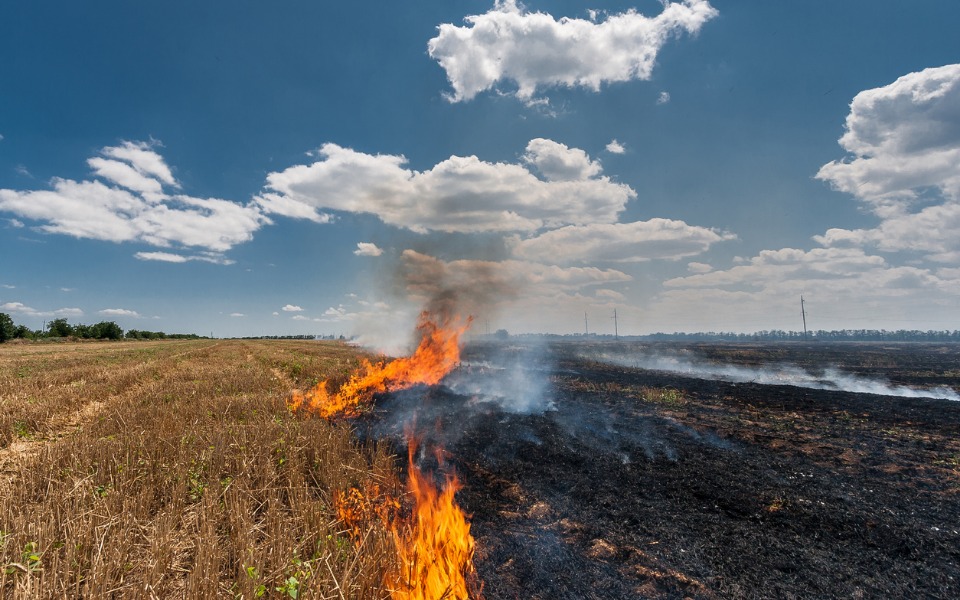
Budget 2023-24 must focus on climate-smart regenerative agriculture: Expert

Climate change impacts agriculture but agriculture also contributes to it. To reduce emissions from agriculture and make our food-production systems resilient to climate change, Union Budget 2023-24 should increase investment in climate-smart agriculture, M L Jat, director, Global Research Programme on Resililent Farm and Food Systems, Icrisat, has told The Federal in a Zoom interview. Icrisat is an international research organisation based in Hyderabad and it focuses on crops for the semi-arid tropics.
Past Budgets have emphasised organic agriculture and paramparagat or traditional cultivation practices. These do not use chemical inputs or use them sparingly. They are low on emissions. These are niche areas but they cannot feed a growing population sustainably. For that, we need regenerative agriculture that is not free of chemicals but uses them judiciously along with crops and practices that improve soil health, reduce water use, and avert or minimise emissions.
Cluster approach needed
Individual crops should not be seen in isolation but as components of cropping systems that adapt to local natural resources, as well as the income of farmers. In the water-depleted zones of Punjab, for instance, a maize, mustard, and moong bean cropping system does just this. Maize uses less water; mustard is an oilseed that has high oil content (which India needs to check dependence on imported edible oil), while moong bean absorbs nitrogen from the air and stores them in the soil, not only reducing its own requirement of urea but also that of the next crop, which is maize.
Watch: Carbon Credits For ‘Climate-Smart’ Agriculture
But Punjab meets its demand of maize from Bihar, which has abundant water, while it grows rice that requires water it is deficient in. Policies that make electricity available free in Punjab are to blame. But a cluster approach is also needed. Traders will not buy kharif maize, which has high moisture, as it results in aflatoxin contamination. So, dryers will have to be put up. But these dryers will not be established unless there is sufficient volume. The combine harvesters needed to harvest maize require devices that cost about Rs 5 lakh each. So, unless there is sufficient acreage under maize, the equipment hirers will not invest in the maize harvesting devices, Jat said.
Need for conservation tillage
Tractor emissions can be reduced by practising no-till or low-till agriculture. The world over, more than 200 million hectares are under conservation tillage. In India, too, it is catching up, particularly in Punjab, where it is touted as a solution to avert the burning of paddy stubble. Direct-seeded rice minimises water use and the emissions that are generated during the production of electricity or the use of diesel pumps. Much of the water that is impounded in paddy fields is meant to curb the growth of weeds; rice in itself does not need so much water. But can we afford to use large quantities of water as a herbicide? Direct-seeded rice does not need transplanting or puddling, but herbicides will have to be used to curb the growth of weeds.
Ploughing or tillage results in the oxidation of carbon sequestered in soil. The release of nitrous oxides also contributes to earth warming. India will have to improve nitrogen use efficiency, which currently is about 40%, which means 60% of the urea that is applied is wasted. Jat said this can be done by growing leguminous crops and also using biologicals or soil microbes. Fertigation and the use of urea prills also reduces wastage.
Also read: Over 9 crore Indians at risk of hunger due to climate change: Report
Jat said the Budget should incentivise the cultivation of millets, which are not only nutritious but also use less water. They should be integrated with cropping systems.
The Green Revolution was high-input-high-output agriculture. We need more-for-less agriculture. We will have to invest in breeding, both conventional and genetic, to create seeds that are resilient to dry spells, flooding, salinity, and threats from pests and diseases. This is an area that the Budget should especially focus on.

